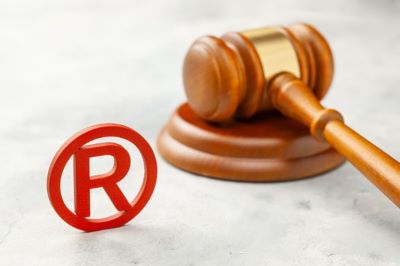 In this case, Medical Technologies (hereinafter referred to as MT) filed a suit for passing off against Neon Laboratories (hereinafter referred to as NL), for the use of the Trade Mark “ROFOL”, which they pleaded is deceptively similar and identical to their trademark “PROFOL”. Brief facts of the case are as follows:
In this case, Medical Technologies (hereinafter referred to as MT) filed a suit for passing off against Neon Laboratories (hereinafter referred to as NL), for the use of the Trade Mark “ROFOL”, which they pleaded is deceptively similar and identical to their trademark “PROFOL”. Brief facts of the case are as follows:
- MT herein had pleaded that they are engaged in business and manufacture of pharmaceutical products and medical preparation, and have acquired high reputation and goodwill in the market. That their predecessor-in-title, introduced a molecule preparation and generic drug ‘propofol’ for which the product permission was obtained from Commissioner of Food and Drugs Control Administration on 02.05.1998. That their predecessor also coined the trademark “PROFOL” in April 1998 and since then the said mark has been used for the product. In 2000 after amalgamating with the predecessor, MT became owner of the mark “PROFOL” and subsequently filed for trademark registration.
- On coming to knowledge that NL introduced in the market similar product with the mark “ROFOL”, the present suit was filed by MT claiming that the mark “ROFOL” is deceptively similar and identical to their mark “PROFOL” and that the NL has been passing off its products as that of MT. The Trial Court restrained NL from using the “ROFOL” on the basis of its similarity to MT’s mark “PROFOL”, which was affirmed by the High Court on an appeal. And an appeal was preferred by NL against the decision of High Court.
Arguments
By Appellants i.e., NL
- That they had obtained registration of the trademark “ROFOL” in class 5 of fourth schedule Trade Mark Rules on 14th September 2001 relating back to date of application viz. 19th October 1992.
- That the date of application is relevant to present dispute as MT was not present in the market in the year 1992.
By Respondents i.e., MT
The primary contention of MT was that they were honest concurrent user of the mark “PROFOL” and that the mark had been in use since 1998 by their predecessor-in-title which was passed upon them in the year 2000 whereupon they filed for registration of the said mark. That they have acquired high reputation and goodwill and that the mark used by NL was deceptively similar and identical to that of MT’s and hence injunction was sought by them to restrain NL from passing off their product as that of MT’s.
Issues
The core issue before Hon’ble Supreme Court was that whether the prior registration will obliterate the goodwill and reputation earned by the parties? Would a deeming provision i.e., relating registration retrospectively prevail on prior user?
Judgement
The Hon’ble Supreme Court observed that to claim exclusivity trademark should not be descriptive and should normally be partake of new creation, but in pharmaceutical industry it is common for a product to be named after the molecule or salt from which it is constituted which form a favourable determinant in passing-off action.
Further, Hon’ble Supreme Court elucidated upon the rule of “first-user” and observed that this rule is seminal part of the Trade Marks Act. The court reiterated Section 34 of the Trade Marks Act, 1999 and observed that:
“This Section palpably holds that a proprietor of a trade mark does not have the right to prevent the use by another party of an identical or similar mark where that user commenced prior to the user or date of registration of the proprietor. This “first user” rule is a seminal part of the Act. While the case of the Plaintiff-Respondents is furthered by the fact that their user commenced prior to that of the Defendant-Appellant, the entirety of the Section needs to be taken into consideration, in that it gives rights to a subsequent user when its user is prior to the user of the proprietor and prior to the date of registration of the proprietor, whichever is earlier. In the facts of the case at hand, the Defendant-Appellant filed for registration in 1992, six years prior to the commencement of user by the Plaintiff-Respondents. The Defendant-Appellant was, thus, not prevented from restraining the Plaintiff-Respondents’ use of the similar mark PROFOL, but the intention of the Section, which is to protect the prior user from the proprietor who is not exercising the user of its mark prima facie appears to be in favour of the Plaintiff- Respondents.”
And thus, it was held by court that reluctance on part of NL to use the mark and to restrain MT from using similar mark could be interpreted as an indication of abandonment of the mark. And, that the MT had been using the mark well before any attempted use by NL. The Court affirmed with the observation of lower courts and subsequently injunction was grated in favour of MT.
By: Dhruv Dangayach, Ramaiah College of Law
Please contact us at info@origiin.com to know more about our services (Patent, Trademark, Copyright, Contract, IP Licensing, M&A of companies)
Subscribe to YouTube Channel HERE
Join India’s largest Linkedin Group: Innovation & IPR




